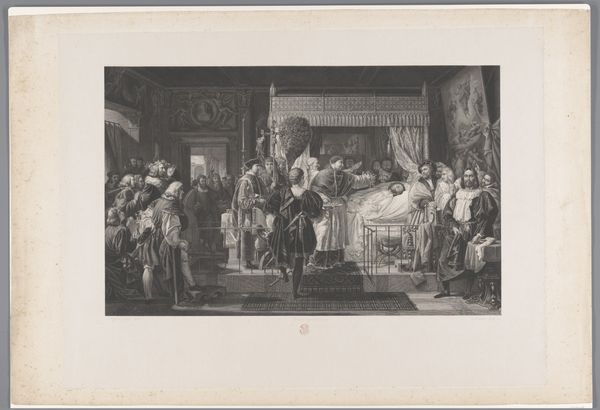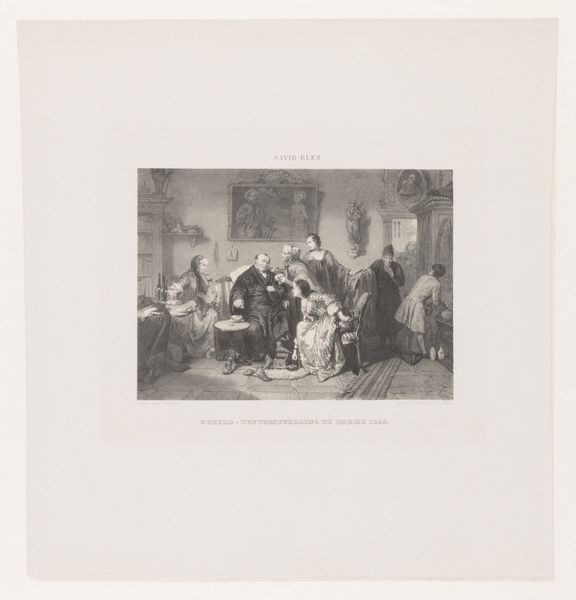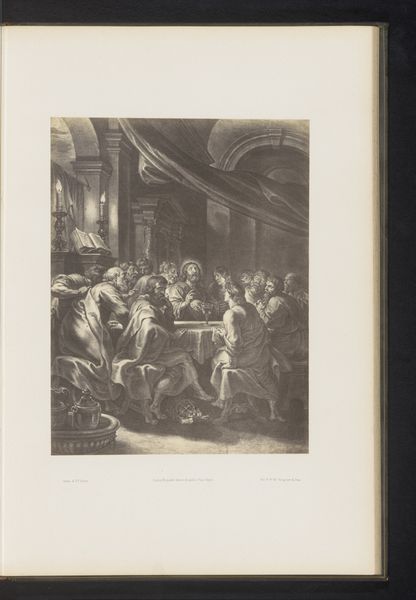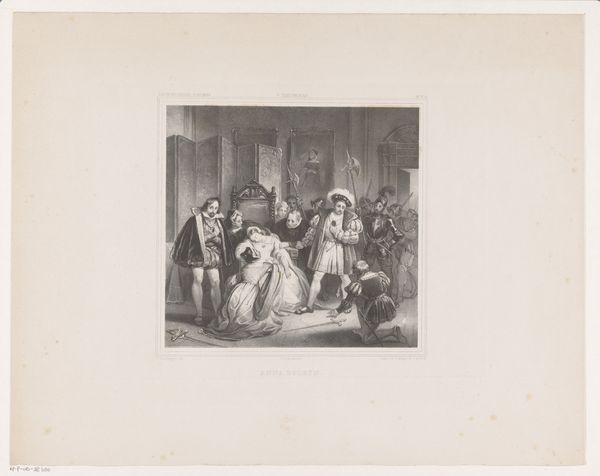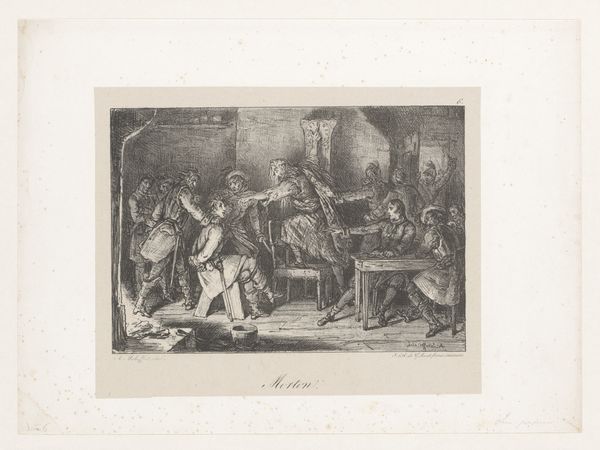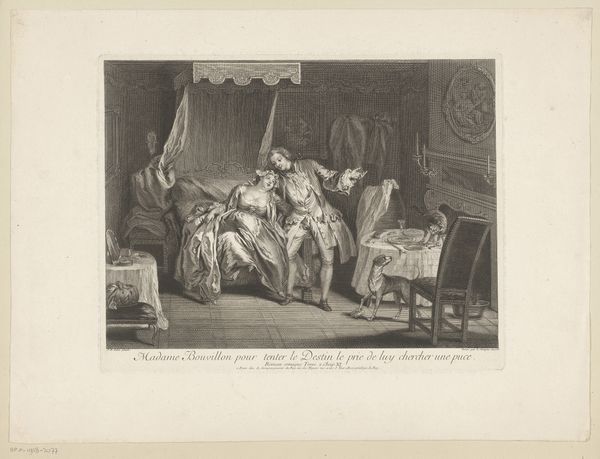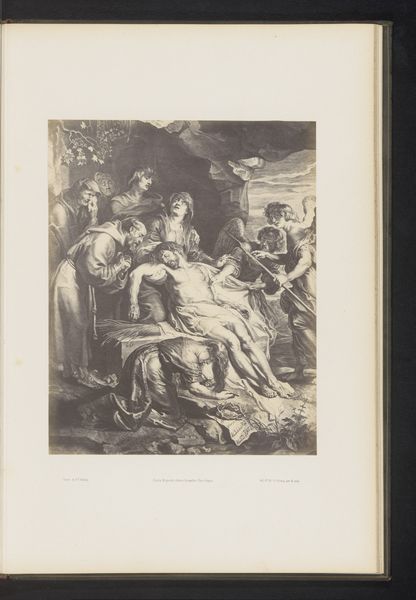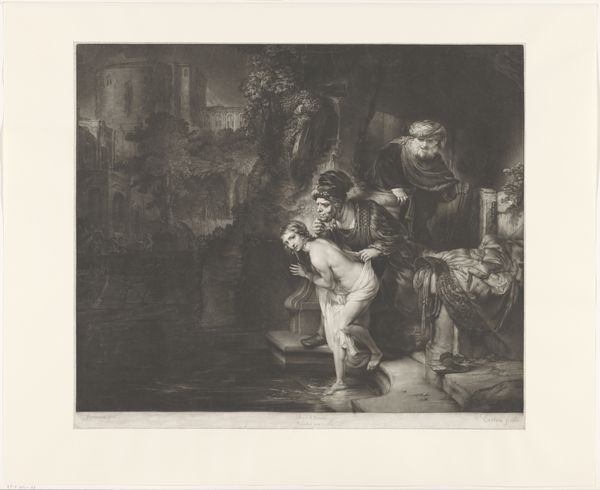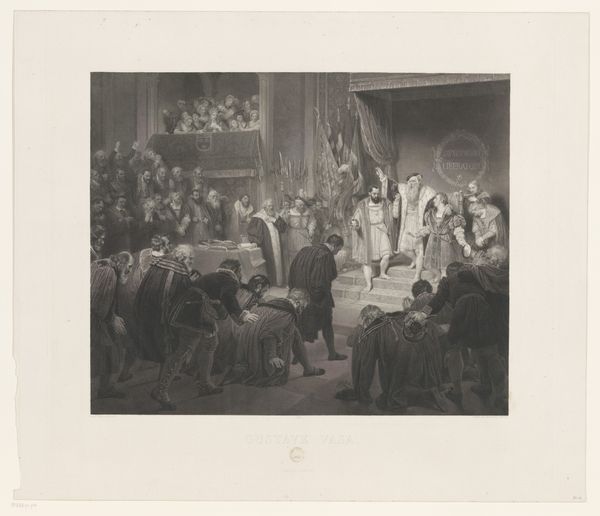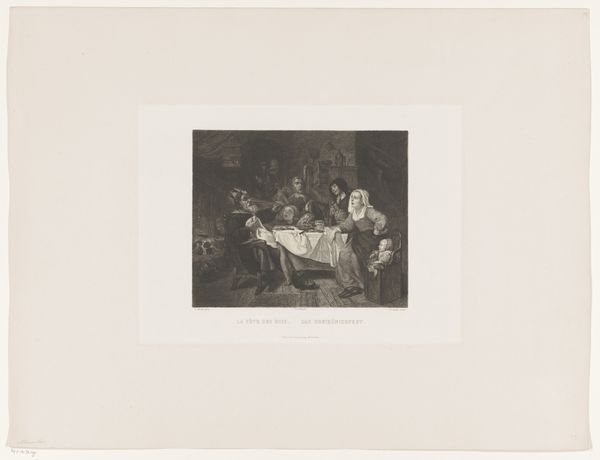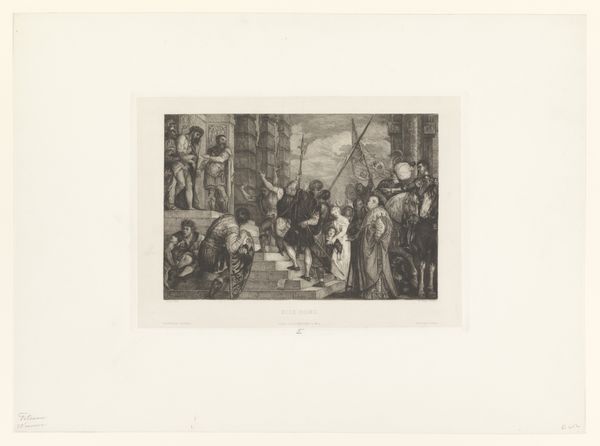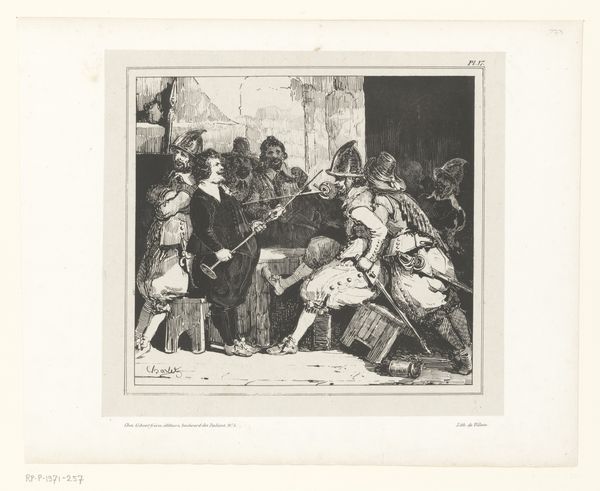
Dimensions: height 193 mm, width 255 mm
Copyright: Rijks Museum: Open Domain
Curator: Welcome. We’re standing before "The Marriage of Tobias and Sarah," an engraving by William Unger, dating roughly from 1847 to 1889, here at the Rijksmuseum. It beautifully exemplifies 19th-century printmaking. Editor: The first thing that strikes me is how insular it feels. Despite all the figures in the composition, there's an air of almost claustrophobic intensity centered around the betrothed. The shading is pretty intense. Curator: Indeed. Unger’s masterful use of line work captures a Rembrandt-esque chiaroscuro, wouldn't you agree? It creates a dramatic spotlight effect. It highlights the figures involved in the signing of the marriage contract, emphasizing the societal and legal validation of their union. The supporting characters look very baroque to me. Editor: Yes, it definitely feels staged in a patriarchal light, even biblical. Consider the gaze. Sarah is the central point in a highly formal setting, yet the attention seems focused on everyone *around* her instead. It seems to reinforce the period's notions of marriage as more transactional, rather than of genuine companionship or consent. It's a historical account about a tale that reinforces those constraints of patriarchy and religious zeal. Curator: That's a potent point, that interplay between religious narratives and societal reinforcement. Look at the figures in the shadows – almost as if the success of this marriage requires the complicity and backing of a whole community of individuals, mostly male. The print showcases the Baroque influence through its dynamism and contrast but also exposes the undercurrent of systemic reinforcement prevalent within marriage institutions of the time. Editor: And notice the dog, a symbol of fidelity at the feet of Tobias. The whole scene reeks of performance. Do the participants really grasp the weight and implications? I mean it's probably not that different now. Curator: It definitely exposes how such moments of celebration carry with them profound, unspoken weight, then and perhaps, as you suggest, even today. A marriage involves more than just two people and their vows, especially for the period in question, that involves social structures and hierarchies. Editor: So much to think about in a marriage certificate, right? William Unger manages to reflect societal expectations, filtered through both faith and gender. Curator: And the act of committing to that agreement, for future generations to witness, in itself is another form of performance, or another set of power dynamics coming together in this very frame. Editor: Yes, it certainly leaves you thinking about whose stories are prioritized and what realities often get obscured by celebratory events.
Comments
No comments
Be the first to comment and join the conversation on the ultimate creative platform.
